Japanese Maple Garden Ideas: Transform Your Backyard into a Tranquil Oasis
Japanese maples can transform any garden with their vibrant colors and graceful shapes. Whether you have a large landscape or a cozy corner patio, these versatile trees add elegance and beauty to outdoor spaces.
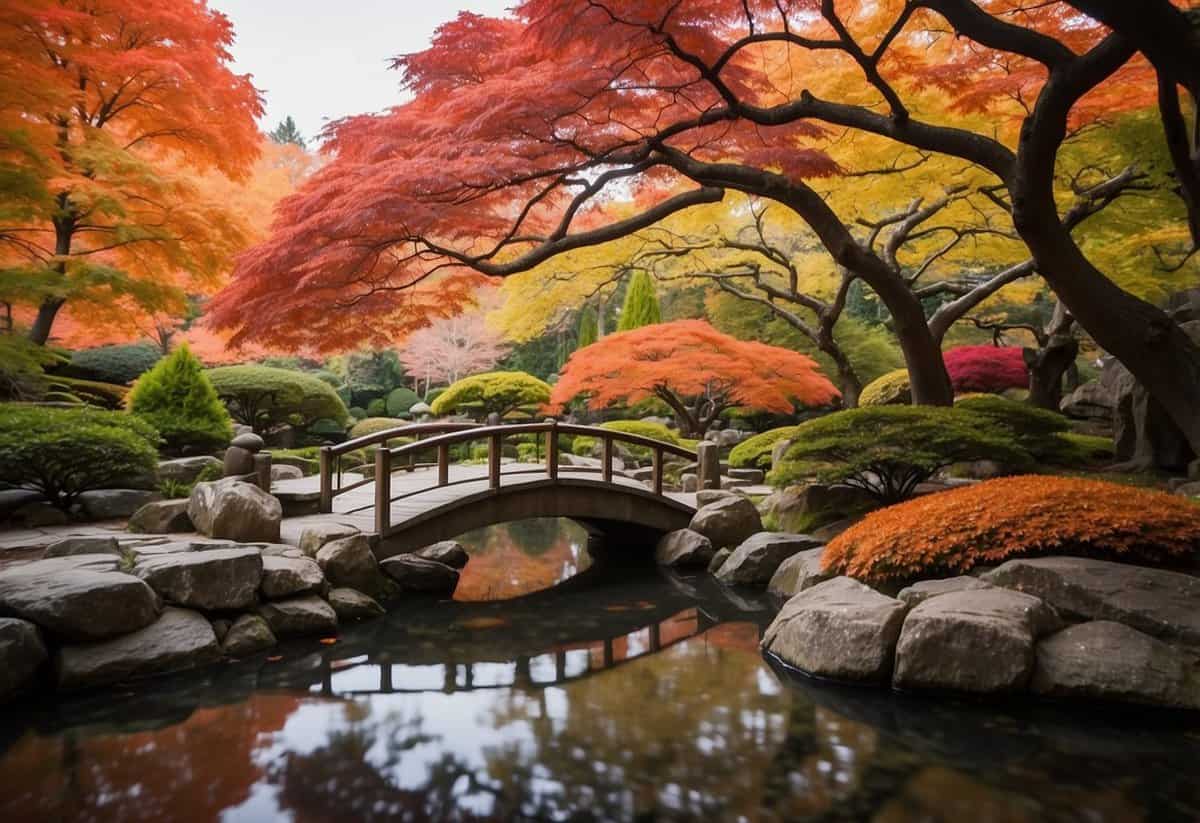
What are the best ways to incorporate Japanese maples into your garden? From small, weeping varieties perfect for containers to larger, stately specimens that provide structure and interest, there are countless design possibilities. Explore different ideas and find the perfect Japanese maple to enhance your garden.
1) Zen Pathway Lined with Japanese Maples
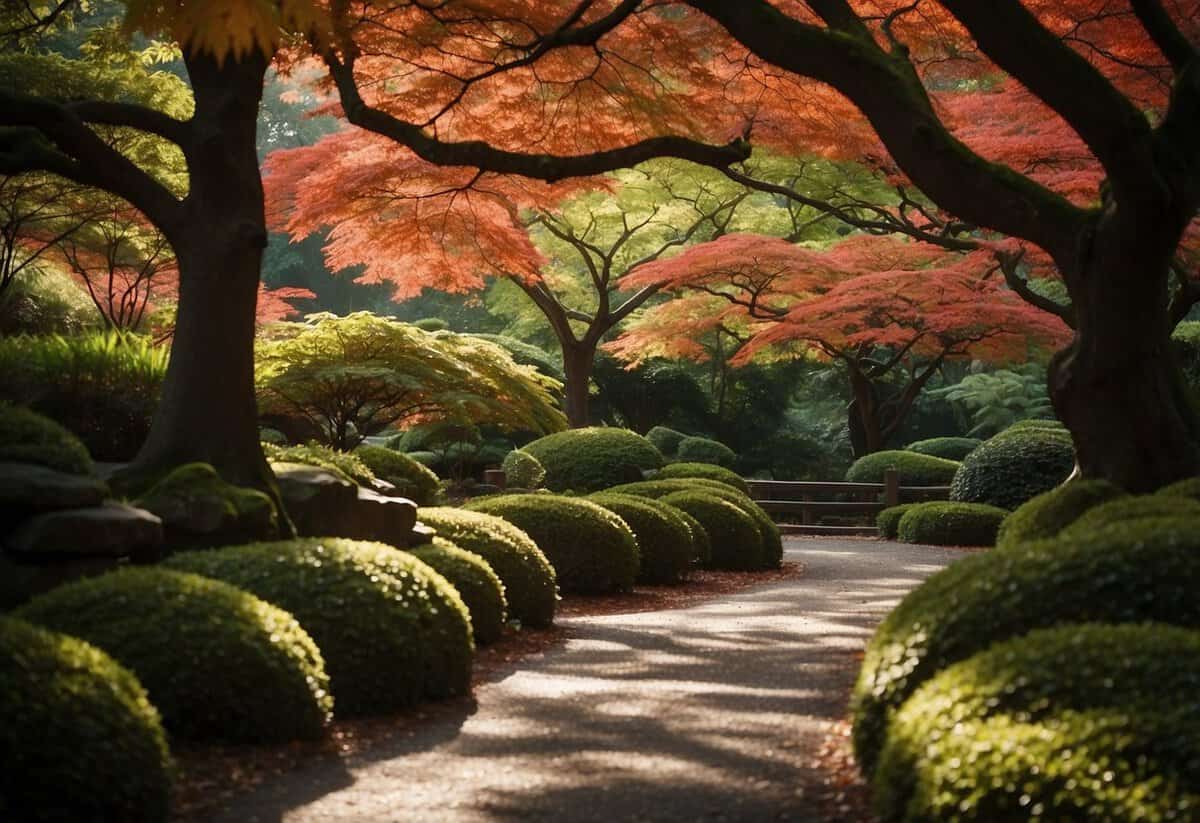
Picture strolling down a serene pathway. You can line this path with Japanese maples to create a calming atmosphere. Their vibrant foliage adds a splash of color, making your walk more enjoyable.
Choose varieties like ‘Red Dragon’ or ‘Bloodgood’. As you walk, the deep red leaves offer a striking contrast to the green surroundings. This creates a peaceful, meditative walk.
Enhance the path with gravel or stones. This complements the natural beauty of the Japanese maples and fits the minimalist style of a Zen garden. The simple combination of elements turns your garden into a tranquil retreat.
2) Koi Pond Surrounded by Maple Trees

Creating a koi pond surrounded by Japanese maple trees can transform your garden. The bright colors of the maple leaves contrast beautifully with the shimmering koi fish.
Place the trees strategically around the pond to provide shade and enhance the tranquil atmosphere. The falling leaves can create a picturesque scene, adding to the garden’s charm.
Consider using a stone bridge over the pond to allow closer views of the colorful fish. The combination of water and trees brings nature’s best elements into one peaceful spot in your yard. For more ideas, visit this guide on Koi Pond Ideas.
3) Maple Tree and Stone Lantern Display
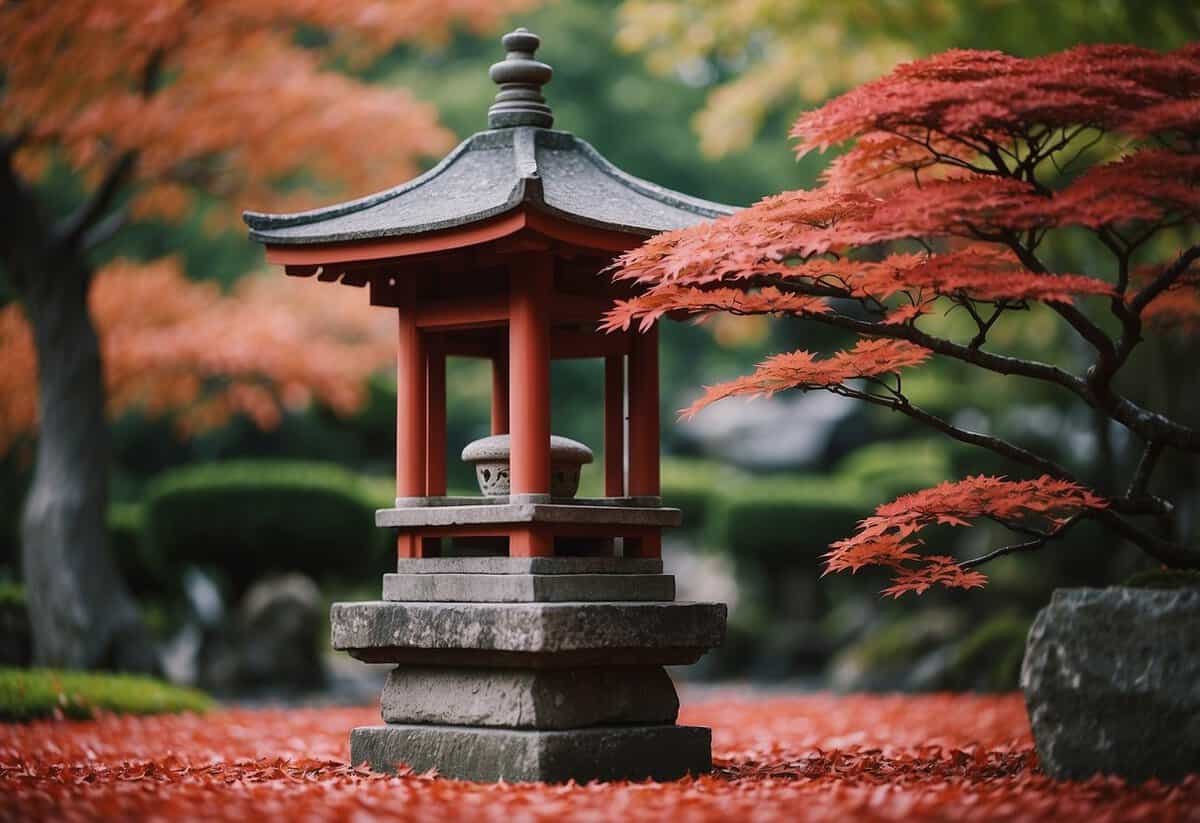
Combining a Japanese maple tree with a stone lantern creates a peaceful garden spot. The gentle branches of the maple provide a striking contrast to the solid stone. This mix of elements invites relaxation and reflection.
Place the stone lantern beneath the maple’s canopy. As the tree grows, its leaves will frame the lantern beautifully. This setup works well in a corner or as a focal point. You can also add moss or small ground covers around the lantern for more texture and color.
4) Bonsai Japanese Maple Tabletop
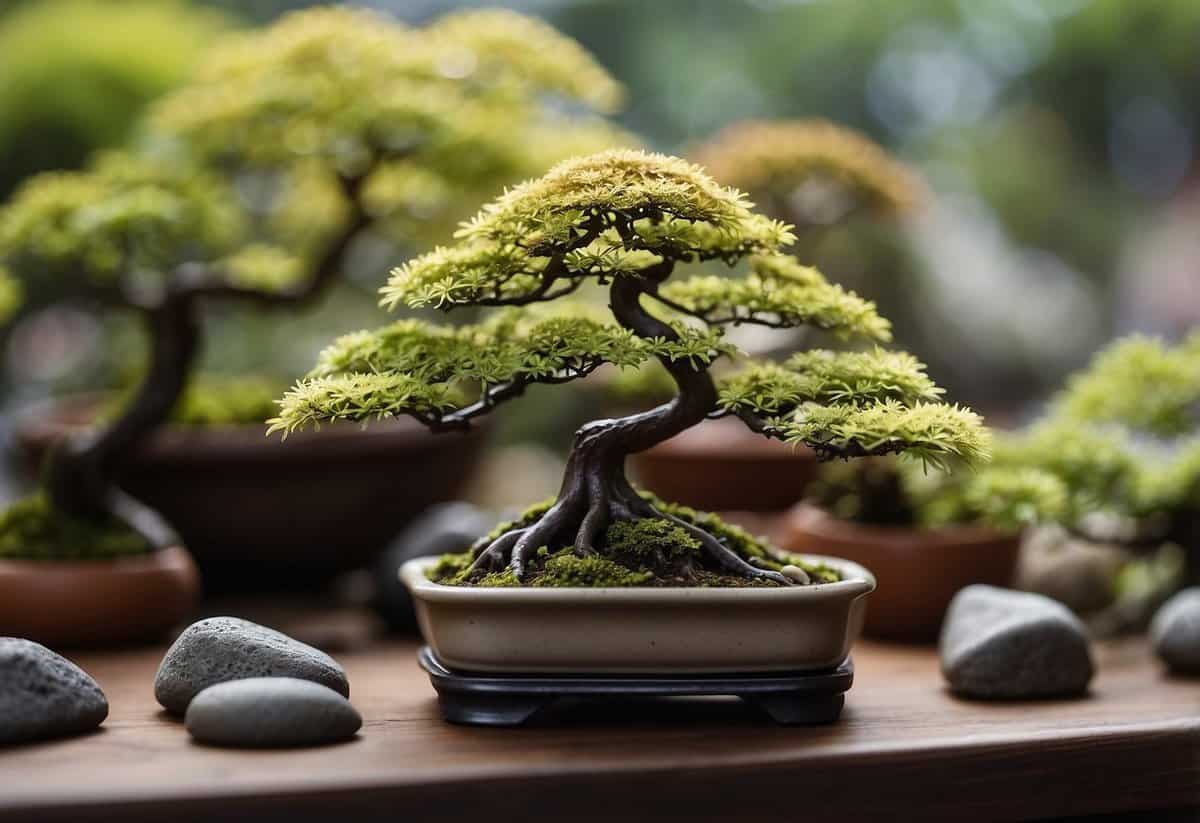
Creating a stunning tabletop display with a bonsai Japanese maple is a delightful project. Place your bonsai on a low stand or small table. This elevates it, making it the centerpiece of your space.
Ensure the tabletop is in a spot with indirect sunlight. Morning and late afternoon sun are best.
Use a decorative pot and match it with a minimalist backdrop. This highlights the bonsai’s beauty and charm. For more care tips, visit this guide on Japanese Maple Bonsai.
5) Maple Grove Meditation Corner

Create a peaceful spot in your garden with Japanese maples. These trees are perfect for a small, quiet space. Their beautiful leaves and calming presence make them ideal for meditation.
You can place a bench among the trees. Use red or green varieties for a balanced look. Add a few rocks and a water feature for a soothing effect.
Consider using different maple varieties like the ‘Bloodgood’ or ‘Katsura’ for vibrant colors. This will add interest and tranquility to your meditation corner. The Gardenia Guide has more ideas for combining plants with Japanese maples.
6) Rock Garden with Variegated Maples
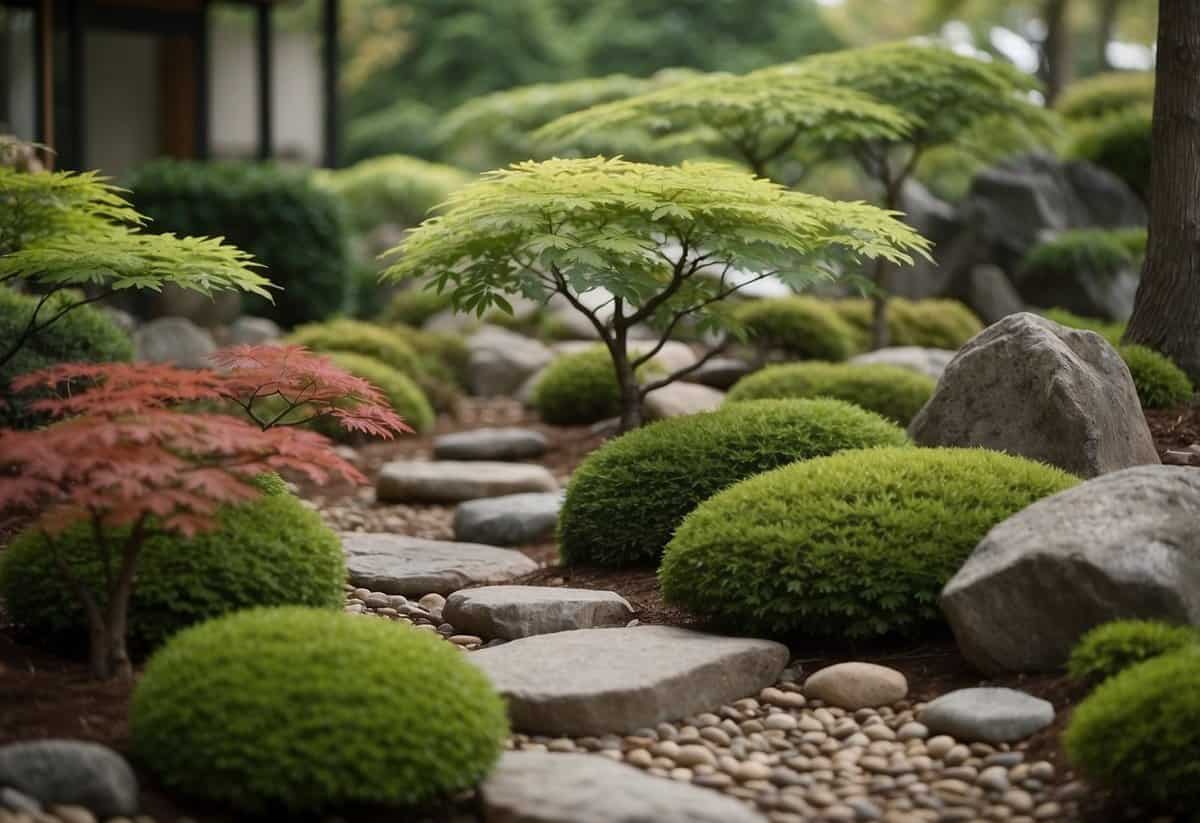
A rock garden is perfect for showcasing variegated Japanese maples. These trees have striking leaves with multiple colors, making them stand out beautifully.
You can place them among different types of rocks to create a natural look. Choose stones of various shapes and sizes to add interest and depth.
Variegated maples are easy to maintain. Just be sure to plant them in well-drained soil and give them some shade during the hottest part of the day. A rock garden with these trees will add color and texture to your outdoor space year-round. For more ideas, check out Japanese Maple Rock Garden Ideas.
7) Waterfall Feature with Red Maples

Adding a waterfall feature in your garden can make it more peaceful. Pairing it with red Japanese maples brings a striking visual effect.
You can use weeping varieties like the Waterfall Japanese Maple to cascade over rocks. The red foliage looks stunning against the flowing water.
This setup also works well with small garden spaces. Select plants like ‘Crimson Queen’ to add height and depth.
8) Maple Tree Bonsai Circle
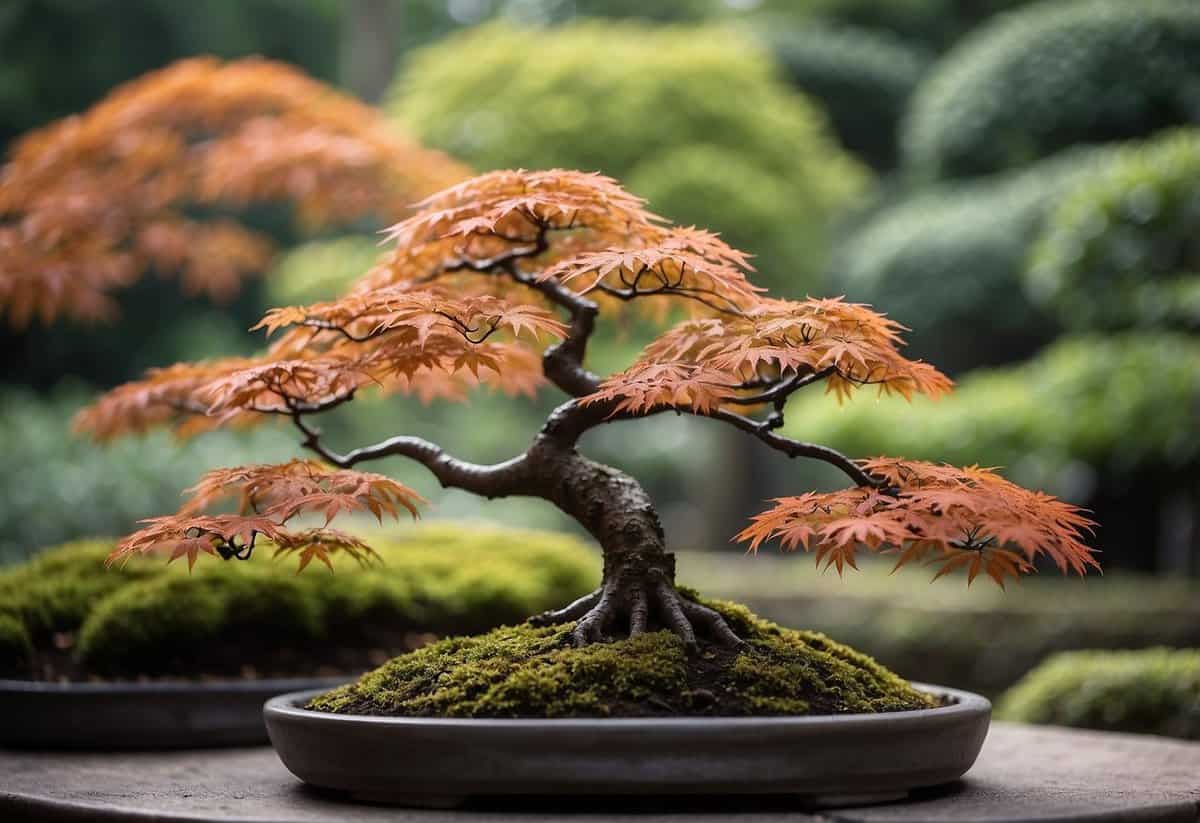
Creating a Maple Tree Bonsai Circle in your garden can be a beautiful focal point.
Arrange several Japanese maple bonsai trees in a circular formation. Make sure they get ample sunlight and good airflow.
Use different cultivars, like Acer palmatum and Deshojo maple, to add variety and color.
Keep them outdoors as they thrive best with natural light and seasonal changes.
9) Seasonal Maple Viewing Deck
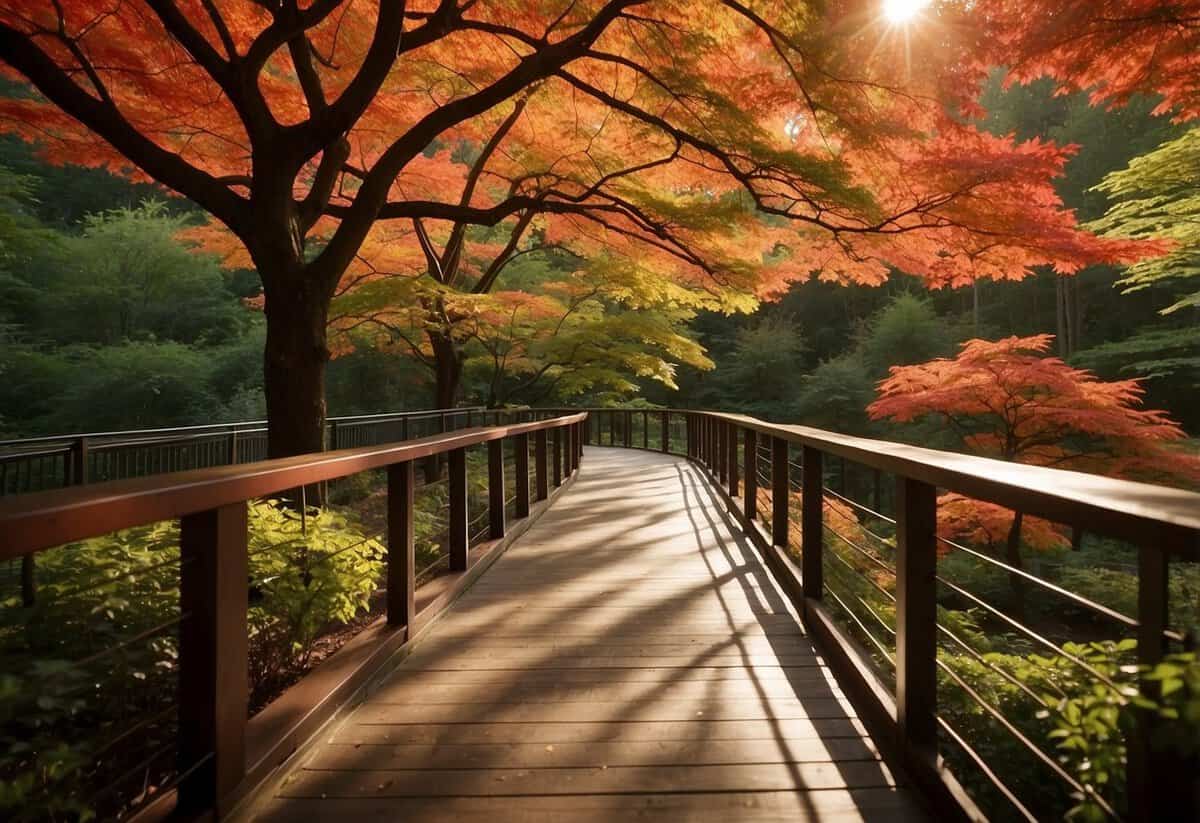
A seasonal maple viewing deck is a perfect way to enjoy Japanese maples throughout the year.
In spring, you can watch new leaves emerge, while in fall, you’ll see brilliant colors.
Place comfortable seating on the deck so you can relax and enjoy the view.
Consider adding some shade-loving plants like hydrangeas or azaleas for extra beauty.
10) Maple Tree-Lit Evening Stroll

Imagine walking through your garden in the evening with Japanese maples softly lit around you. This creates a peaceful and magical atmosphere.
Use low-voltage landscape lights to highlight the trees’ colorful leaves. Placing lights at the base of the trees can create stunning shadows and highlights.
For added charm, consider stringing fairy lights among the branches. These gentle lights can make your evening strolls truly enchanting.
To explore more ideas, check out Japanese Maple Garden.
Planning Your Japanese Maple Garden

Japanese maples add beauty to any garden with their vibrant foliage and unique shapes. To ensure your tree thrives, consider the location, soil, and seasonal changes.
Choosing the Right Location
Choosing the right location is crucial for your Japanese maple. These trees prefer partial shade but can tolerate full sun if watering is maintained. Make sure the spot is sheltered from strong winds, which can damage the delicate leaves.
Japanese maples can grow well in small gardens and containers. Some varieties reach only 10 to 15 feet tall, making them perfect for beds and borders. Avoid planting too close to buildings or other large trees to give them enough space to spread their branches.
For a stunning display, plant Japanese maples near azaleas, hydrangeas, and other shade-loving perennials. These plants create a complementary setting and help highlight the maple’s beauty.
Soil Preparation Tips
Proper soil preparation is essential for the health of your Japanese maple. These trees thrive in well-draining soil. If your garden has heavy clay or sandy soil, amend it with organic matter like compost or well-rotted manure to improve drainage and nutrient content.
Maintain a soil pH between 5.5 and 6.5 for the best growth. You can test your soil pH using a home test kit and adjust it by adding lime if the soil is too acidic or sulfur if it’s too alkaline.
Regular mulching helps retain moisture and keeps the roots cool. Spread a layer of 2-4 inches of mulch around the base, but keep it a few inches away from the trunk to prevent rot.
Seasonal Considerations
Understanding seasonal changes is key to caring for your Japanese maple. In spring, new leaves emerge with vibrant colors. This is the best time to prune any dead or damaged branches to encourage healthy growth.
During summer, water the tree regularly, especially if it’s planted in full sun. Japanese maples need consistent moisture but avoid waterlogging the roots.
In fall, enjoy the breathtaking colors as the leaves turn brilliant shades of red, orange, and yellow. Keep an eye out for any signs of pests or diseases, and take action promptly.
In winter, protect your tree from frost damage by covering young trees with burlap or a frost cloth if heavy frost is expected. Mulch generously to insulate the roots from freezing temperatures.
Design Elements for a Japanese Maple Garden

Using Japanese maples in your garden can create a tranquil, beautiful space. Key elements include water features, pathways and stones, and evening lighting.
Incorporating Water Features
Water features can greatly enhance the peaceful atmosphere in your garden. You might consider adding a small pond or a trickling fountain. The sound of water can help create a calming environment.
If you have limited space, a simple ceramic water basin might do the trick. This feature can reflect the Japanese maple’s exquisite foliage, adding to the overall beauty. Additionally, water features can attract birds and other wildlife, bringing more life to your garden.
Placing your water feature near a Japanese maple will highlight both elements. Make sure the water feature is easy to maintain, as clean water is essential for the garden’s health.
Using Pathways and Stones
Pathways and stones help define the garden space and guide visitors through it. Smooth, flat stones can create a neat walkway, leading guests to the Japanese maples and other plants.
Consider using natural stones that blend well with the outdoor setting. Arrange them in a pattern that is both functional and pleasing to the eye. Gravel pathways are another option, offering a softer feel underfoot.
Stones can also be used to create borders around garden beds, helping to separate different areas. Incorporating stepping stones or small stone bridges over your water features adds a touch of charm and encourages exploration.
Lighting Ideas for Evening Appeal
Good lighting can transform your garden into a magical space at night. Soft, subtle lights hung in the trees or placed along pathways can illuminate your Japanese maples and highlight their beauty.
Solar-powered lights are an eco-friendly option that charge during the day and light up automatically at night. Lantern-style lights bring a traditional feel, adding to the authenticity of your Japanese maple garden.
Placing lights at the base of your Japanese maples can cast dramatic shadows and emphasize the trees’ shapes. Use lights sparingly to avoid overwhelming the natural beauty of your garden. Lighting should enhance, not dominate, the overall design.
Caring for Japanese Maple Trees

Japanese maple trees thrive with proper pruning and routine maintenance to keep them healthy and visually striking. Regular pruning helps shape the tree, while monitoring for diseases and pests ensures longevity.
Pruning and Shaping Techniques
Japanese maples benefit greatly from thoughtful pruning. If you want an airy appearance, thin out branches over time. For a tree canopy shape, remove a few lower limbs.
Pruning is best done in late July to reduce the tree’s size. To promote growth, prune in spring. Japanese maples will naturally form beautiful shapes even without pruning.
Pruning Tips:
- Use clean, sharp tools.
- Cut at a slight angle.
- Avoid cutting too close to the main trunk.
By following these steps, you’ll help your Japanese maple flourish.
Pest and Disease Management
Like all plants, Japanese maples can attract pests and diseases. Common pests include aphids, scale insects, and spider mites. You can manage these by regularly checking your tree and applying appropriate treatments.
To prevent diseases like verticillium wilt, use well-drained soil and avoid overwatering. Make sure your tree has good airflow by not planting it too close to other plants.
Pest and Disease Tips:
- Inspect leaves and stems regularly.
- Remove affected leaves or branches promptly.
- Consult local garden centers for specific pest treatments.
Taking these precautions can protect your Japanese maple from common health issues.







